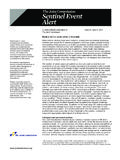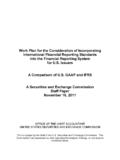Transcription of CPMP guideline on control of impurities of …
1 The European Agency for the Evaluation of Medicinal Products Public 7 Westferry Circus, Canary Wharf, London, E14 4HB, UK Tel. (44-20) 74 18 84 00 Fax (44-20) 74 18 8595 E-mail: EMEA 2004 Reproduction and/or distribution of this document is authorised for non commercial purposes only provided the EMEA is acknowledged London, 22 April 2004 CPMP/QWP/1529/04 COMMITTEE FOR PROPRIETARY MEDICINAL PRODUCTS (CPMP) guideline ON control OF impurities OF PHARMACOPOEIAL SUBSTANCES: COMPLIANCE WITH THE EUROPEAN PHARMACOPOEIA GENERAL MONOGRAPH SUBSTANCES FOR PHARMACEUTICAL USE AND GENERAL CHAPTER control OF impurities IN SUBSTANCES FOR PHARMACEUTICAL USE DISCUSSION IN THE QUALITY WORKING PARTY June 2003 October 2003 ADOPTION BY CPMP (as joint guideline CPMP/QWP/6203/03) December 2003 ADOPTION BY MRFG January 2004 ADOPTION BY CVMP (as position paper EMEA/CVMP/059/04) March 2004 RELEASE BY CPMP FOR IMPLEMENTATION April 2004 DATE FOR COMING INTO OPERATION April 2004 Note.
2 This guideline has been prepared to facilitate the application of other guidelines and European Pharmacopoeia. No consultation is necessary. Public CPMP/QWP/1529/04 EMEA 2004 Page 2/3 1. Introduction The European Pharmacopoeia has published some time ago a general monograph Substances for pharmaceutical use (1). A revised version has been adopted at the November 2003 meeting of the European Pharmacopoeia Commission. This monograph sets the frame to prepare the specific active substances monographs. In addition a general chapter control of impurities in substances for pharmaceutical use (2), which has been adopted in November 2003 by the European Pharmacopoeia Commission, indicates the rules, how the tests on impurities (mainly the related substances test) have to be dealt with in a monograph with regard to thresholds, acceptance criteria and the transparency list (specified and other detectable impurities ).
3 It also gives an explanation how the limit for impurities in a specific monograph should be interpreted. Basically the ICH Q3A(R) concepts and thresholds for reporting, identification and qualification of impurities have been adopted. 2. Problem statement The general monograph (1) and the general chapter (2) are mandatory in effect and therefore all substances described in specific monographs must also comply with these general requirements. While recently adopted monographs comply to a great extent to these requirements, there are some so called old monographs which do not comply either not having a list of impurities (transparency statement) or having still a related substances test not complying with the state of the art ( tlc where impurities cannot be quantified, a general limit test < for single impurities , no acceptance criterion for total impurities ) and therefore not complying to (1) and/or (2). The issue which we need to discuss is how to react when we are faced during an application for a MA to a so called old monograph either through the submission of a CEP, a EDMF or full submission of data in the dossier.
4 3. Background information and position from the QWP It is an absolute need to have specific active substances monographs which correspond to current scientific knowledge, especially as due to globalisation we are confronted with many different sources of a given active substance. Even if a monograph cannot necessarily cover all sources, a hplc method is more likely to detect different impurity profiles than the current pharmacopoeial tlc methods. This is also why the European Pharmacopoeia Commission has revised its general policy and adopted the ICH Q3A (R) concepts and thresholds. In addition, this is also in line with Article 23 of Directive 2001/83 which states: After an authorization has been issued, the authorisation holder must, in respect of the methods of manufacture and control provided for in Article 4, Article 8(3)(d) and (h) take account of technical and scientific progress and introduce any changes that may be required to enable that medicinal product to be manufactured and checked by means of generally accepted scientific methods.
5 These changes shall be subject to the approval of the competent authority of the Member State concerned. (Slightly amended version of the original Directive 65/65, article 9a) As the European Pharmacopoeia is specifically mentioned in the directives, it can be concluded that this statement equally applies to the monographs of the European Pharmacopoeia. Public CPMP/QWP/1529/04 EMEA 2004 Page 3/3 Therefore there is a need to revise these old monographs. 4. Compliance with European Pharmacopoeia The process of revision of old monographs should be handled in parallel by EDQM and by the licensing authorities: EDQM/European Pharmacopoeia: European Pharmacopoeia to continue its current revision programme (may be it should be identified together with the authorities, which active substances have priority and/or the QWP might also like to identify active substances for which a revision of the old monograph is not considered necessary).
6 Certificate of suitability (CEP): - A certificate should not be granted if based on an old monograph not complying with (1) and/or (2). The applicant needs to make a new proposal to obtain the certificate; this would then serve as the basis for the revised monograph. - In the case where a CEP has been granted, based on an old monograph, a revision should be initiated during renewal of the CEP. Licensing authorities: Every time an application for MA is made by a pharmaceutical manufacturer for a medicinal product containing a pharmacopoeial active substance, the reference member state should check, when reference to a monograph is made ( CEP, EDMF), that this monograph complies with (1) and (2) above. If not, the applicant should be requested to propose a revised specification in line with the requirements in (1) and (2), before an authorisation is granted.
7 This would only apply to all new applications, line extensions and also to variations ( change of manufacturer of the active substance), but not to already marketed products. Once a new monograph is proposed by the applicant and accepted by the authority, should be informed and a revision of the monograph should be initiated. 5. References (1) General monograph Substances for pharmaceutical use , Monograph Nr 2034 (2) General chapter control of impurities in substances for pharmaceutical use , ( ), PA/PH/SG (02) COM 2R
















